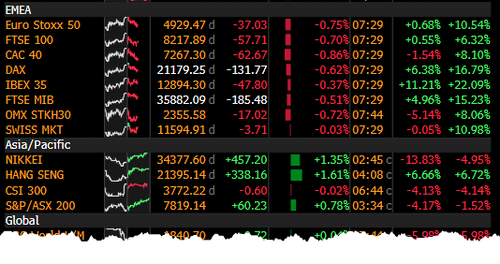Economic uncertainty has shifted the industrial real estate market in the Lehigh Valley. Commercial real estate experts have found that tenants have been taking a more measured approach when making leasing decisions and landlords are finding more empty space. It appears the build-them-and-fill-them era of warehouse construction in the Valley during the COVID pandemic has cooled off.
In the first quarter of 2025, commercial real estate company CBRE noted that the vacancy rate in the Valley edged up to 8.8%, an increase of half a percentage point from the fourth quarter of 2024. Leasing activity was down as some tenants and landlords waited to see the potential impact of tariffs imposed by the U.

S. last week. “Through the pandemic, there were a lot of decisions that needed to be made in haste, because you had to get products to people quickly,” said Leah Balerno, senior vice president at CBRE.
“Now we’re seeing kind of the reverse. There is a higher level of scrutiny to every decision that’s made. There are more people involved in every decision that’s made, particularly on the tenant side.
” Balerno said the economic uncertainty has been ongoing because of the election year, and the tariffs have extended it. “I think that that is going to continue to kind of be a theme that we see quite heavily, and a lot of it has delayed decisions,” Balerno said. “We’re seeing tenants are taking longer than ever to make their decisions.
Typical lease up-time was maybe a few months and now for a deal to take at least a year until it’s fully inked is not unheard of.” The rise in the vacancy rate, Balerno said, also means the market is stabilizing between supply and demand. “When you see vacancy rates in sub 5%, you’re going to see rental rate increases,” she said.
“So it may be good for the landlords, but not great for the tenants. So there’s kind of that fine line where it’s more balanced.” In its most recent U.
S. figures from the fourth quarter of 2024, CBRE said the national vacancy rate is at 6%, a 10-year high. Real estate management firm Jones Lang Lasalle said leasing volume declined to 6.
8 square feet in the first quarter for its Eastern & Central Pennsylvania region, which includes the Lehigh Valley. It’s the lowest in five years. “Between dwindling opportunities, data center users scooping up large sites and developers remaining disciplined on ground breakings, supply remains in check,” JLL wrote in its first-quarter report released last week.
Renewals accounted for 54.9% of leasing activity as many companies opted to stay put to avoid the cost of relocating. JLL used the example of Kallanova renewing its 1.
2 million square foot lease with Prologis in Lower Macungie Township. Buildings under construction fell below 10 million square feet for the first time since 2016, a 77.5% drop from the peak of 44.
4 million in 2022, JLL said. The Lehigh Valley Planning Commission reported it reviewed 8.8 million square feet of warehouse space in 2024, about 70% of the 12.
7 million square feet of nonresidential development it looked at last year. For January, the LVPC said it reviewed 336,000 square feet of warehouse space, compared with 1.6 million in January 2024.
In its annual report , the LVPC said that after a decade dominated by large industrial buildings, investors are now more often proposing spaces of 50,000-450,000 square feet, while existing facilities could be expanded. “We’ve seen a lot of renewals and consolidations,” CBRE’s Balerno said, adding that businesses may consider a move to a newer building if it gets a similar rental rate. “I think we can expect a little bit more of that.
” JLL said that despite tariffs and other economic uncertainties, there is an uptick in demand for spaces around 500,000 square feet for third-party logistics and food and beverage users. “Over the longer term, market fundamentals are expected to remain strong for Eastern & Central Pennsylvania on account of the market’s value proposition, robust transportation infrastructure, proximity to major consumer markets and high barriers to entry,” it said. Balerno said there are leases presently pending so activity will likely increase in the spring.
“I think it should help balance and will hopefully bring that vacancy rate down a little bit as well,” she said. “Even then, it’s not going to be a huge jump. It’s going to be very small and incremental.
” Morning Call reporter Evan Jones can be reached at [email protected]..
Business

Economic uncertainty is changing how warehouses are built, used in the Lehigh Valley

It appears the build-them-and-fill-them era of warehouse construction in the Valley during the COVID pandemic has cooled off.















